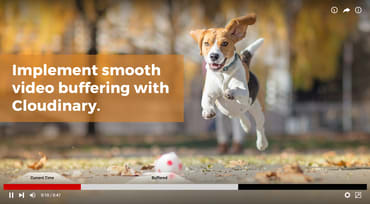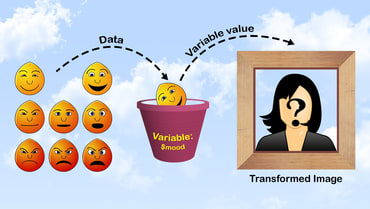Embedding and managing images and other media content in a mobile application is always challenging. The processes of downloading a media file from the web, storing it on the device, and then displaying it to the user are surprisingly and often frustratingly complex from a coding perspective. In addition, you probably want to add code that enables reusing images rather than downloading it every time, but you have to be smart about it to avoid clogging the precious storage space on your customer's device. Furthermore, your design probably requires that images be displayed in different sizes and DPRs in different devices, but creating and maintaining multiple versions of every image manually is virtually impossible.

This article was originally posted on Scotch.io
In the early days of the web, the only thing that mattered was getting that content out to users no matter how long it took or what resources it consumed. As a matter of fact, users seemed to understand and were ready to wait till whenever there browser's loading spinner stops and the contents displayed.

JPEG 2000 is not dead! There are several conversations online about the usability of JPEG 2000 and why it is not commonly used like the other image formats such as JPEG, PNG, GIF and others. In this article, we’ll discuss the pros and cons of JPEG 2000 in relation to other acceptable image formats.

(Photo by Erol Ahmed)
A few weeks ago, Google officially announced a new JPEG encoder, called Guetzli.
Cloudinary has been tracking Guetzli since it was soft-launched in October; it has been amazing to watch news about it bubble up into the pop-tech press.

When analyzing use of website or mobile application storage, there’s no doubt that media files, such as video clips and images, use the most space. Migrating these files to the cloud and storing them in a location where they are available online makes perfect sense, but images and videos often require additional transformations before they are delivered to end users.

HTML5 is the latest evolution of the HTML standard. It is bundled with a lot of new elements and attributes that makes semantics, connectivity, performance, device access, 2D/3D graphics and styling better on the web.

We all know that images attract interest and increase engagement, but with the huge overload of images out there, we sometimes need to get creative to stand out in the crowd. Your users who upload photos to your site or app may also be looking for those same creative opportunities. A quick look at the most popular social media apps and their continually increasing toolbox of special photo effects shows the increasing trend in popularity and demand for these fun ways of expressing one’s identity.

Who doesn't love some striking imagery to drive your point home? Whether you're selling a product or service, trying to communicate complex ideas, or simply captivate the emotions of your users, pictures can do that. Everyone knows they work, and everyone loves them.

No programmer could imagine a world without variables. Neither can Cloudinary. That’s why Cloudinary now offers image transformations that support user-defined variables.
Using Cloudinary, you can already deliver transformed images with a variety of transformations, including resizing, cropping, rotating, a huge toolbox of special effects and filters, text and image overlays, and more, all of which you can deliver responsively, on-the-fly, and optimized for quick delivery via CDN.

This year at SXSW, we’re infusing Cloudinary’s powerful Visual APIs to the SXSW Hackathon, where teams compete on high-tech creativity during a straight 24-hour programming event. Taking place at TechSpace, this exciting event will culminate with demos and awards at the Hilton (Salon C) on Wed, March 15 at 2pm.
